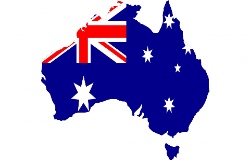Twitter Fairy Tale to give toxic nightmare a happy ending
Greenpeace launches Twitter Fairy Tale to give toxic nightmare a happy ending
Press release - January 14, 2014
Amsterdam, 14 January 2014 – Starting today at 08:00 CET and added to every hour, on the hour, Greenpeace is pioneering a new way of delivering its environmental messages by posting a 12-part “Detox Fairy tale” from its Twitter, Facebook and Instagram accounts.
The new storytelling approach is part of the organisation’s global “Detox” campaign, which today revealed the presence of hazardous chemicals in clothing items purchased from 12 international fashion brands [1].
Tommy Crawford, Strategic Communications Manager for Greenpeace’s Detox Campaign said:
“Major fashion brands including Burberry, adidas and Disney are using a cocktail of hazardous chemicals to make clothing for kids. Many of these chemicals can have adverse impacts either on our immune, reproductive and hormonal systems, but brands have the chance to give this toxic nightmare a happy ending by eliminating these little monsters from their supply chains and products.”
The Detox Fairy tale will be told to over 2.5 million followers from the Greenpeace International Facebook, Twitter and Instagram accounts [2], and potentially millions more via Greenpeace accounts from around the world. The social media fairy tale is part of a wider creative package, including a webpage [3], a photo-shoot that combines live-action with illustration [4], and offline activities that will roll out over the coming days and weeks. The central idea was to take the widely unknown hazardous chemicals used by the textile sector, such as Perfluorinated Chemicals (PFCs) and Phthalates [5], and turn them into ‘Little Monsters’.
“The sad truth is that we are surrounded by hazardous chemicals - in our clothes, our homes and the air we breathe. The ‘Little Monsters’ concept allows us to make the invisible threat visible, and demonstrate the ubiquitous nature of these toxic beasties in our day-to-day lives.” said Crawford.
“But where there are villains, there are bound to be heroes. In the case of the Detox campaign this has been the millions of activists, fashion-lovers and concerned parents who have worked together to push 17 major fashion labels to clean up their toxic habits. The campaign proves that when enough people combine their passion and creativity, major brands do listen and respond.”
“In order to raise awareness for this issue among those with the power to bring about positive change we're showing the world the toxic truth that lies behind the glamor of the fashion industry. We want to inspire people to collectively challenge the industry to end its toxic addiction, and this involves exploring new ways of engaging people as well as drawing creative inspiration from fashion – an industry renowned for innovation and self expression” concluded Crawford.
Greenpeace has in the past been recognized in the advertising community for creative ways of drawing peoples’ attention to pressing environmental issues, recently winning Cannes Lions Awards for the site “intotheatctic.gp” [6] and the “Toxic Tours Travel Agency” [7].
About the campaign:
Greenpeace’s Detox campaign calls for major clothing brands to commit to zero discharge of all hazardous chemicals by 2020. 17 major fashion brands have already made landmark Detox commitments and many, such as Valentino, Mango and Zara, are making significant progress towards their goals of supply chain transparency and chemical elimination. More information can be found here.
Notes:
[1] The 12 tested brands were: adidas, American Apparel, Burberry, C&A, Disney, GAP, H&M, Li-Ning, Nike, Primark, Puma and Uniqlo. More information available here.
[2] Greenpeace International’s Twitter, facebook and Instagram accounts.
[3] The Little Monsters webpage.
[4] Photo package available here.
[5] Phthalates are a chemical group often used in the textile industry, for example, to soften plastics in some prints and some are known to be toxic to the reproductive system, particularly for development in mammals. Perfluorinated Chemicals are a group of man-made chemicals used by industry for their non-stick and water-repellent properties. Evidence shows that many PFCs persist in the environment and can accumulate in body tissue through the food chain. Once in the body some have been shown to affect the liver as well as acting as hormone disruptors, altering levels of growth and reproductive hormones. For more information please see here.
[6] http://www.intothearctic.gp/en/
[7] Toxic Tours campaign
ENDS


 Global Forest Coalition: Global NGOs Call On International Maritime Org To Reject Biofuels And Commit To Truly Clean Energy
Global Forest Coalition: Global NGOs Call On International Maritime Org To Reject Biofuels And Commit To Truly Clean Energy Australian Catholic University: Principals Navigate Growing Challenges As Anxiety, Depression Increase And Violence, Workloads Intensify
Australian Catholic University: Principals Navigate Growing Challenges As Anxiety, Depression Increase And Violence, Workloads Intensify SNAP: Survivors Deliver Vos Estis Lux Mundi Complaints Against Six Cardinals To Vatican Secretary Of State Parolin
SNAP: Survivors Deliver Vos Estis Lux Mundi Complaints Against Six Cardinals To Vatican Secretary Of State Parolin UNICEF Aotearoa NZ: Myanmar Earthquake A Further Blow For Millions Of Children
UNICEF Aotearoa NZ: Myanmar Earthquake A Further Blow For Millions Of Children Greenpeace: 'Desperate And Deceitful'- Deep Sea Mining Frontrunner Turns Its Back On Pacific Nations
Greenpeace: 'Desperate And Deceitful'- Deep Sea Mining Frontrunner Turns Its Back On Pacific Nations 350.org: Australia Announces Election Dates, Pacific Islanders Rally To Vote For Climate
350.org: Australia Announces Election Dates, Pacific Islanders Rally To Vote For Climate